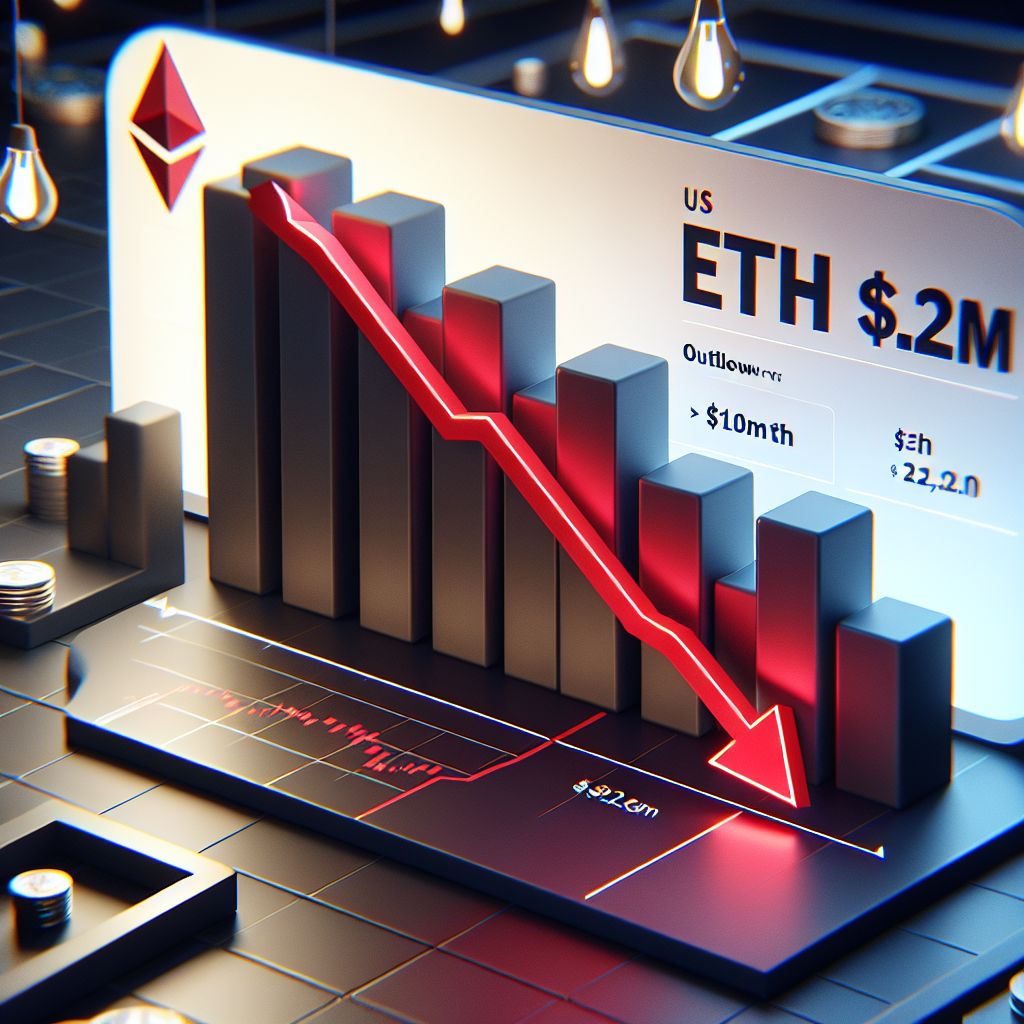Overview: Daily ETF Flow Snapshot
On November 25, 2025, one U.S. Ethereum exchange-traded fund (ETF) registered an estimated net outflow of approximately $2.2 million. This daily movement, captured by market flow trackers, adds to the mosaic of institutional activity that traders and analysts use to gauge short-term sentiment in the Ether (ETH) market.

ETF flows have become an increasingly important barometer of institutional demand since the first U.S. ETH ETFs launched. While a single-day outflow of this size is not unprecedented, the data point warrants attention because ETF flows can amplify price moves, influence liquidity, and inform risk-management decisions for both spot and derivatives traders.
What ETF Flows Signal for Market Participants
Net inflows and outflows to ETFs represent aggregated buying or selling pressure that can affect underlying spot liquidity. For a liquid asset such as ETH, daily ETF flows tend to have a transactional impact rather than fundamentally altering long-term supply dynamics, but they remain a timely indicator of institutional appetite.
Key takeaways from the recent outflow
- Short-term sentiment: A $2.2M outflow suggests cautious or profit-taking behavior among some institutional allocators on that session.
- Liquidity considerations: Repeated outflows could tighten buying pressure and increase volatility during adverse market moves.
- Signal vs. noise: Single-session data should be assessed alongside multi-day trends and other indicators to avoid overreacting to short-term noise.
2025 Market Context
The broader macro and regulatory environment in 2025 frames how ETF flows are interpreted. After the initial wave of ETF approvals in 2024 and early 2025, institutional participants now have more product choice and operational infrastructure for digital-asset exposure. At the same time:
- Central bank policy normalization in several major economies has reduced some of the liquidity tailwinds that supported risk assets in prior years.
- Regulatory clarity in certain jurisdictions has encouraged larger asset managers to increase allocations, while uncertainty in other regions continues to create episodic flows.
- Market participants are increasingly attentive to macro cross-currents—interest-rate expectations, USD strength, and equity market dynamics—that can influence crypto allocations.
Price and Volatility Implications
ETF outflows are one of several variables that can weigh on short-term price action. In spot markets, the effect depends on the scale and persistence of flows relative to overall market depth.
- Transient impact: A single-day $2.2M outflow is typically absorbed by deep liquidity pools without creating prolonged dislocations, but it can coincide with increased volatility.
- Persistent trends: If outflows continue over multiple sessions, price discovery may test nearby support levels and widen bid-ask spreads on exchanges.
- Correlation with BTC: Ethereum often exhibits correlation with Bitcoin; thus, concurrent weakness in BTC could compound ETH downside pressure, while BTC strength may help stabilize ETH despite outflows.
Trading and Risk Management Strategies
Traders and portfolio managers can integrate ETF flow data into strategy design and risk controls. Below are practical approaches for different market participants.
Short-term traders
- Combine flow data with technical indicators (RSI, moving averages, Volume Profile) to identify high-probability entry and exit zones.
- Use defined-risk instruments—options spreads or limited-leverage futures—to capitalize on increased intraday volatility without excessive tail risk.
- Monitor order-book depth across venues; ETF-driven flows can be venue-specific and present arbitrage opportunities.
Medium- to long-term investors
- Assess whether outflows are episodic or part of a sustained trend before adjusting strategic allocations.
- Consider diversification across ETH-related exposures, such as staking derivatives or layer-2 governance tokens, to reduce dependence on spot price moves.
- Keep position sizing discipline and maintain rebalancing rules that account for higher volatility regimes.
On-Chain Fundamentals and Demand Drivers
ETF flows are only one piece of the demand picture. On-chain activity and protocol-level dynamics continue to influence ETH’s long-term prospects.
- Staking and supply: With a sizable portion of ETH staked on proof-of-stake validators, available liquid supply is structurally reduced, which can amplify price responses to changes in net demand.
- EIP-related mechanics: Fee-burn mechanisms introduced in prior network upgrades continue to offset issuance; periods of high activity increase net burn and can be bullish over time.
- Layer-2 adoption: Growing usage of layer-2 scaling solutions reduces base-layer congestion and fees, supporting broader application growth—this organic demand can counteract short-term ETF outflows.
- DeFi and NFTs: Resurgence in decentralized finance activity or renewed interest in NFTs can create secular demand that decouples price action from ETF flow-driven sentiment.
Cross-Market Correlations and Institutional Behavior
Institutional flows into crypto ETFs often interact with broader financial market dynamics. In 2025, several patterns have become more apparent:
- Equity linkage: Technology and innovation-led equity moves can influence allocations to crypto; risk-on equity rallies have historically been associated with increased ETF inflows.
- Fiat liquidity: Shifts in cash management or treasury allocations among corporates and asset managers can trigger rebalancing into or out of crypto ETF exposure.
- Hedging strategies: Institutional participants may hedge ETH exposure using futures or options—flow reversals can therefore correlate with activity in derivatives markets.
Regulatory and Market Structure Considerations in 2025
Regulatory developments remain a structural factor for ETF flows. Since the product suite expanded, asset managers have adapted compliance and custody solutions to suit different jurisdictional requirements.
- Custody standards: Higher custody and audit standards have increased institutional confidence, but compliance costs can influence product fees and attractiveness.
- Transparency and reporting: Enhanced transparency in ETF reporting helps market participants read flow signals more effectively, making intraday flow data more actionable.
- Policy shifts: Any new guidance or enforcement actions could trigger rapid reallocations; portfolios that incorporate scenario-based planning can respond faster to such events.
How to Monitor ETF Flows Effectively
ETF flow numbers are most useful when combined with a broader data set. Recommended metrics and sources to triangulate activity include:
- Multi-day flow aggregates to separate noise from trends.
- Spot and derivative open interest—rising open interest with inflows can signal genuine demand; falling open interest with outflows can indicate deleveraging.
- On-chain indicators: transaction counts, active addresses, staking inflows/outflows, and burn rates.
- Cross-asset indicators: BTC price action, US Treasury yields, and equity sector performance.
Outlook and Takeaways
The $2.2 million outflow reported for a U.S. Ethereum ETF on November 25, 2025 is a useful, time-stamped signal of institutional behavior but should not be treated in isolation. In 2025’s evolving market landscape, ETF flows are one of many inputs that inform trading, hedging, and allocation decisions.
Practical takeaways for market participants:
- Contextualize single-day flows within multi-day trends before making strategic moves.
- Blend ETF flow data with on-chain fundamentals and cross-market indicators to build a holistic view.
- Employ disciplined risk management—use tools such as options for asymmetric risk, and maintain diversified exposure to ETH-related strategies.
Final Note
As institutional adoption of crypto products matures through 2025, flow transparency and product breadth will continue to shape how investors interpret day-to-day movements. Staying informed across ETF flows, on-chain metrics, and macro developments will remain essential for navigating Ethereum market dynamics.
Disclaimer: This post is a compilation of publicly available information.
MEXC does not verify or guarantee the accuracy of third-party content.
Readers should conduct their own research before making any investment or participation decisions.
Join MEXC and Get up to $10,000 Bonus!
Sign Up


